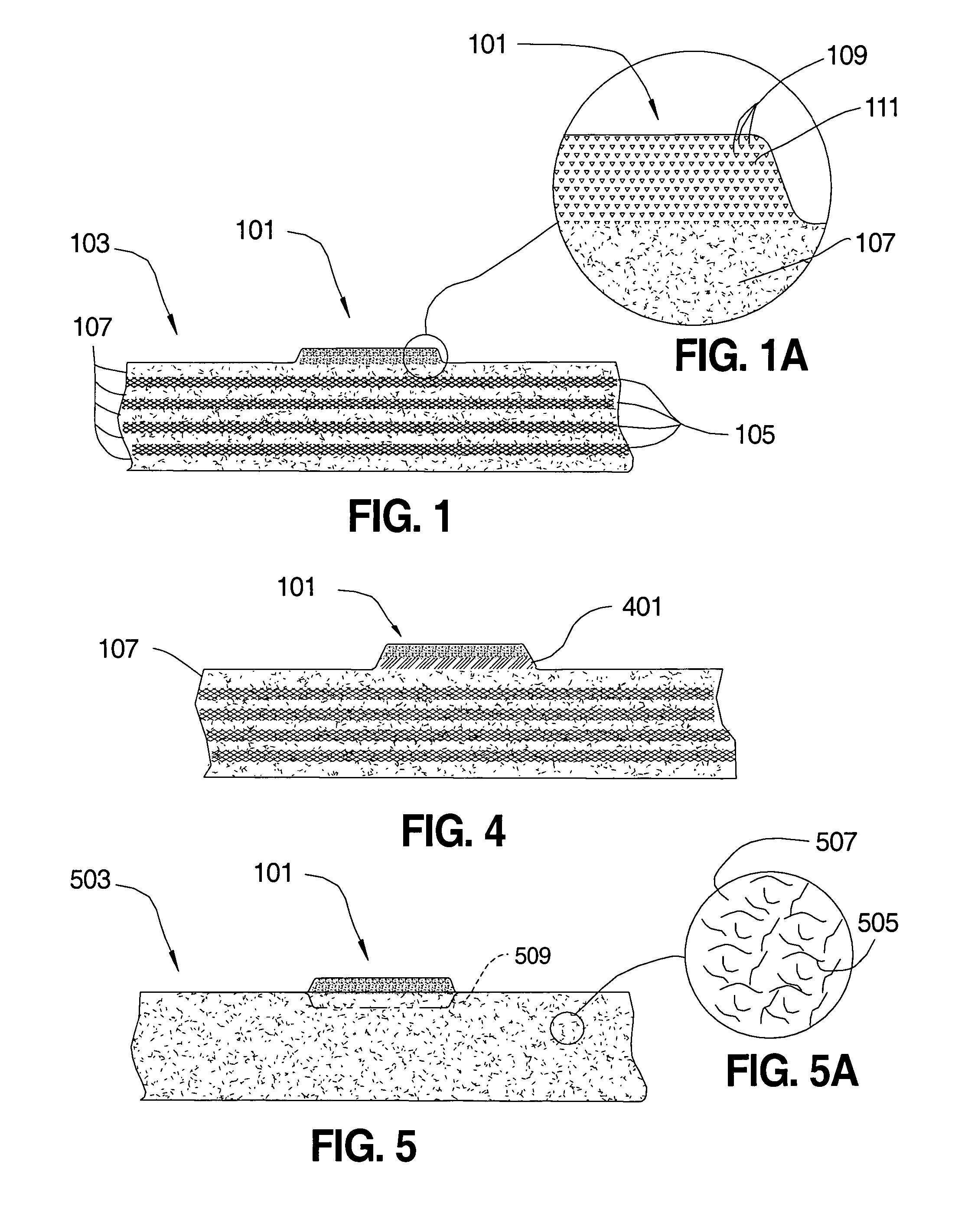Heath monitoring method and apparatus for composite materials
a composite material and health monitoring technology, applied in the direction of resistance/reactance/impedence, line-transmission details, instruments, etc., can solve the problems of affecting the health the damage of the composite material, and the deformation of the polymer material with age, so as to achieve the effect of improving strength and reducing volume requirements
- Summary
- Abstract
- Description
- Claims
- Application Information
AI Technical Summary
Benefits of technology
Problems solved by technology
Method used
Image
Examples
Embodiment Construction
[0040] The following is a description of the preferred embodiments of a condition sensor for composite materials and a method for determining the condition of the composite material by measurement of the resistance of the condition sensor.
[0041]FIG. 1 is a cross section drawing of a preferred embodiment of a conductive composite condition sensor 101 for a composite material 103. Composite material 103 is made of a reinforcement fiber such as reinforcement fabric 105 dispersed in a thermoplastic or thermoset polymer matrix 107. Reinforcement fabrics include fibers made of metallic, carbon, glass, boron, ceramic and polymeric fibers. The reinforcement fibers may be in woven or non-woven mats, or they may be dispersed in the matrix. Matrix material 107 includes thermoplastic materials such as polyamides, polyolefins and fluoropolymers, and thermosets such as epoxies and polyesters.
[0042] As shown best in FIG. 1A, condition sensor 101 consists of conductive particles 109 such as carbo...
PUM
| Property | Measurement | Unit |
|---|---|---|
| electrical resistivity | aaaaa | aaaaa |
| electrical property | aaaaa | aaaaa |
| resistance | aaaaa | aaaaa |
Abstract
Description
Claims
Application Information
 Login to View More
Login to View More - R&D
- Intellectual Property
- Life Sciences
- Materials
- Tech Scout
- Unparalleled Data Quality
- Higher Quality Content
- 60% Fewer Hallucinations
Browse by: Latest US Patents, China's latest patents, Technical Efficacy Thesaurus, Application Domain, Technology Topic, Popular Technical Reports.
© 2025 PatSnap. All rights reserved.Legal|Privacy policy|Modern Slavery Act Transparency Statement|Sitemap|About US| Contact US: help@patsnap.com



